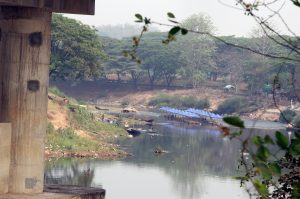Anti-regime militias have captured Myawaddy – a strategically important border city and home to about 200,000 people – from Myanmar’s ruling junta. The Karen National Union (KNU) is now in control of most of Karen state and is urging direct talks with the Thais across the frontier.
The KNU is one of about 20 ethnic armed organizations (EAOs) aligned with the People’s Defense Force (PDF), the armed wing of the opposition National Unity Government (NUG).
They have battled a nasty civil war ever since the Myanmar military under General Min Aung Hlaing ousted an elected government in early 2021. But the EAOs-PDF have recorded impressive battlefield victories over the last five months and the fall of Myawaddy was key.
Myawaddy sits on the Moei River opposite Mae Sot in northwest Thailand and ranks as Myanmar’s most important land border with about US$1.1 billion in trade passing through every year.
Much of the military has been encircled and isolated along the Yangon-Naypyidaw corridor while the EAOs-PDF are in control of most of the country’s borders with Thailand, Laos, China, India and Bangladesh. EAOs are also establishing state political control over their native homelands.
The PDF has also launched four drone strikes on the junta’s all important Aye Lar Air Base in Naypyidaw, saying advances in long-range drones had enabled those attacks. One was timed as the U.N. Security Council was holding an open meeting on Myanmar in New York on April 4.
In Myawaddy, banks and most businesses are still closed, and internet and phone lines remain cut while the KNU says it is restoring order, distributing food rations and redeploying heavy artillery and other weapons captured from the military over the last two weeks.
The Diplomat’s Luke Hunt was recently based in Mae Sot from where he travelled along the frontier and sent back the accompanying images.











































